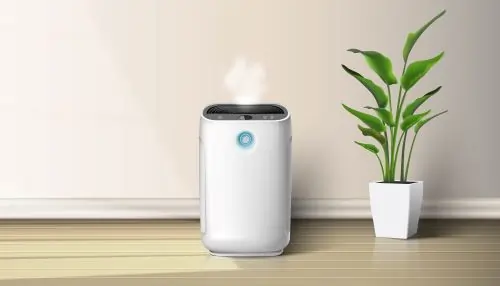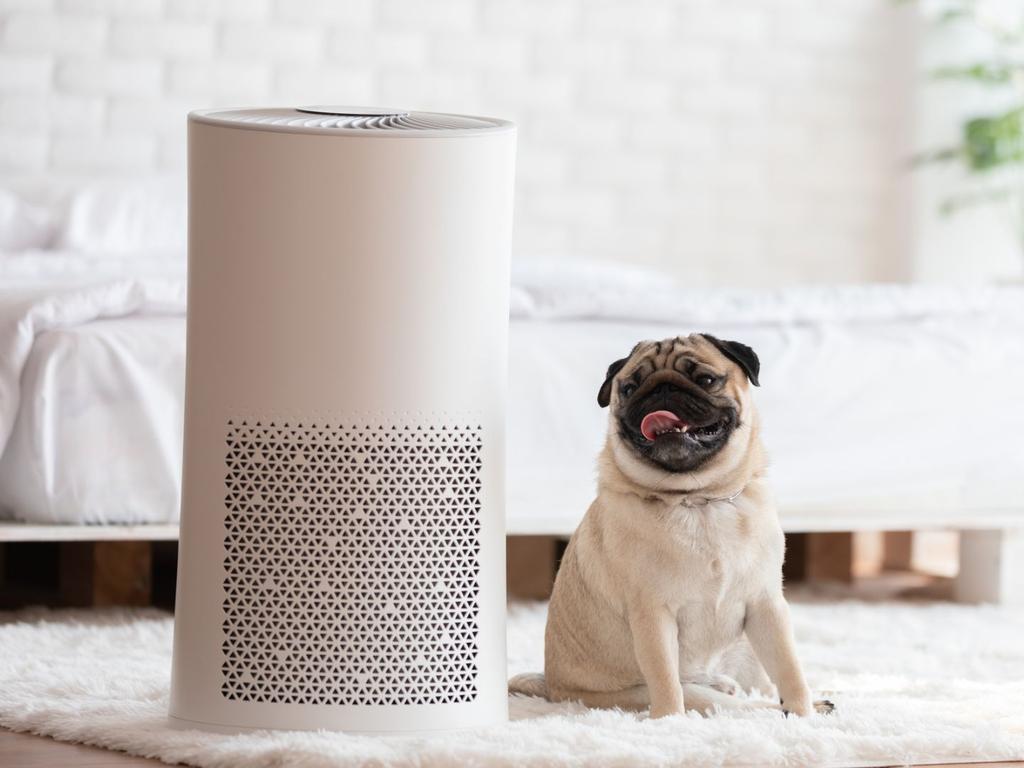Featured
Table of Contents
- – Recognizing Allergies and Triggers
- – Can Air Purifiers Aid With Allergies?
- – The Scientific Research Behind Air Purifiers ...
- – Are Air Purifiers Right for You? Variables to...
- – Maximizing Air Purifiers for Allergies
- – Beyond Air Purifiers: A Multi-Pronged Techniqu...
- – Living a Breath Easier Life with Allergies
:max_bytes(150000):strip_icc()/spr-primary-hwortock-001-e165b9a055e14512abf7a52884cd6b86.jpeg)
For allergic reaction sufferers, spring blossoms and fluffy pets can bring even more sniffles and sneezes than delight. Indoor irritants like allergen, pet dander, and plant pollen can ruin your breathing system, leaving you feeling unpleasant. Air cleansers are usually promoted as a solution, appealing cleaner air and alleviation from allergic reaction symptoms. But are air cleansers absolutely worth the investment for allergy patients? This thorough guide discovers the scientific research behind air purifiers, their performance for allergies, and the factors to take into consideration when deciding.
Recognizing Allergies and Triggers
To understand the function of air purifiers, allow's initial explore allergies and their triggers:
- The Sensitive Feedback: Allergies happen when your immune system overreacts to a harmless compound, like plant pollen or dirt termites. This reaction causes the release of histamines, creating allergic reaction symptoms like sneezing, coughing, itchy eyes, and a drippy nose.
- Common Irritants: Indoor irritants consist of dirt termites, pet dog dander, mold and mildew spores, pollen that wanders inside, and also roach allergens. These airborne particles can aggravate your respiratory tracts and trigger allergy signs and symptoms.
Can Air Purifiers Aid With Allergies?
Air cleansers function by pulling in air, straining pollutants, and launching cleaner air back into the area. Here's just how they can possibly profit allergy victims:
- Trapping Irritants: HEPA (High-Efficiency Particulate Air) filters, a typical kind made use of in air purifiers, are very efficient at catching airborne allergens like dirt mites, family pet dander, and plant pollen. By getting rid of these triggers from the air you breathe, air purifiers can aid reduce allergy symptoms.
- Improved Air Quality: Air cleansers can likewise get rid of other toxic irritants from the air, such as smoke, dust, and unstable natural compounds (VOCs) This overall improvement in air high quality can be helpful for allergy sufferers who are sensitive to these extra triggers.
The Scientific Research Behind Air Purifiers and Allergies
Studies have shown that air purifiers can be valuable in reducing allergic reaction signs. Here's a take a look at some crucial study searchings for:
- A 2019 review released in the journal "Present Allergy and Bronchial asthma Reports" concluded that air purifiers with HEPA filters can be efficient in lowering allergic reaction symptoms and boosting lifestyle for people with hay fever (hay high temperature)
- A 2018 study published in the journal "Record of Allergy, Asthma & Immunology" discovered that making use of an air purifier with a HEPA filter in the bed room considerably lowered dirt mite irritant degrees and improved rest high quality in people with asthma.
However, it is necessary to keep in mind that research study likewise recommends some constraints:
- Air Purifier Insurance Coverage: Air purifiers are most effective in the area where they are put. Their impact on allergens in other components of your home might be minimal.
- Intensity of Allergies: While air purifiers can help, they could not be a full solution for extreme allergic reactions. Drugs and other allergy monitoring approaches could still be required.
Are Air Purifiers Right for You? Variables to Consider
Below are some crucial elements to take into consideration when deciding if an air purifier deserves it for your allergies:
- Intensity of Allergies: If your allergies are mild and well-controlled with medication, an air purifier may not be needed. For those with modest to serious allergic reactions, an air purifier can be a beneficial tool in managing signs and symptoms.
- Kinds of Irritants: Consider the main triggers for your allergic reactions. Air cleansers are most effective for air-borne allergens like dust mites, pet dander, and pollen. They could not be as useful for allergens like mold that grow on surfaces.
- Way of living and Atmosphere: If you have family pets, reside in a location with high plant pollen matters, or have worries regarding interior air top quality, an air purifier can be beneficial.

Maximizing Air Purifiers for Allergies
If you make a decision to spend in an air purifier for allergic reactions, here are some pointers for maximizing its effectiveness:
- Choose a HEPA Filter: Look for an air purifier with a HEPA filter accredited to record bits as little as 0.3 microns.
- Right Dimension for the Room: Guarantee the air purifier has a Clean Air Delivery Rate (CADR) that appropriates for the dimension of the space you prepare to utilize it in.
- Placement Issues: Position the air purifier in the area where you spend the most time, such as your bed room.
- Routine Filter Upkeep: Change HEPA filters according to the maker's instructions to keep ideal efficiency.
- Combine with Various Other Strategies: Air cleansers are not a one-size-fits-all service. Combine them with various other allergic reaction monitoring strategies like medicine, routine cleaning, and allergen-proof bedding.
Beyond Air Purifiers: A Multi-Pronged Technique to Allergic Reaction Management

While air purifiers can be a useful device in your allergic reaction arsenal, they are not a wonder drug (If you're looking to buy an Air Purifier then Air Cleaners Australia is the best destination.). A detailed approach that integrates air purification with various other methods is crucial to achieving long-lasting allergy alleviation. Right here are some added approaches to take into consideration:
- Drug: Antihistamines, decongestants, and nasal corticosteroids, recommended by your physician, can effectively manage allergy signs and symptoms.
- Allergic Reaction Screening and Immunotherapy: Recognizing your certain allergens through allergic reaction testing can pave the way for immunotherapy, a treatment that helps desensitize your body immune system to irritants gradually.
- Air High Quality Administration: Regular cleansing with a HEPA-filtered hoover and allergen-specific cleaning items can considerably lower allergen, animal dander, and other irritants in your home.
- Managing Humidity: Mold grows in humid environments. Using a dehumidifier can assist regulate moisture levels and avoid mold and mildew growth, a typical interior allergen.
- Lifestyle Adjustments: If you have hatreds pollen, remaining indoors during height pollen periods and showering after hanging out outdoors can assist decrease exposure.
- Bed linen and Surfaces: Framing cushions and cushions in allergen-proof covers can significantly reduce allergen direct exposure. Frequently washing bedding in warm water assists eliminate allergens.
Living a Breath Easier Life with Allergies
Remember, taking care of allergies is a continuous process. By understanding your triggers, applying a multi-pronged approach, and possibly incorporating an air purifier right into your strategy, you can significantly reduce allergic reaction signs and breathe less complicated.
Added Considerations:
- Consulting a Doctor: If your allergies are severe or otherwise well-controlled with drug and way of living modifications, get in touch with an allergist for individualized suggestions.
- Air High Quality Surveillance: Think about using an air quality monitor to track allergen degrees in your home and adjust your management methods accordingly.
- Long-Term Investment: An excellent high quality air purifier can be a lasting investment in your health and wellness and wellness.
By taking a positive technique and taking on a combination of these approaches, you can develop a much healthier and allergy-friendly setting, enabling you to delight in a breath much easier life.
Table of Contents
- – Recognizing Allergies and Triggers
- – Can Air Purifiers Aid With Allergies?
- – The Scientific Research Behind Air Purifiers ...
- – Are Air Purifiers Right for You? Variables to...
- – Maximizing Air Purifiers for Allergies
- – Beyond Air Purifiers: A Multi-Pronged Techniqu...
- – Living a Breath Easier Life with Allergies
Latest Posts
Facts About Can You Dishwash Your Yeti Rambler With Confidence? Revealed
Understanding the Shift: Why Lindfield is Phasing Out Gas
About Is It Safe To Automate Cleaning For Your Yeti Rambler?
More
Latest Posts
Facts About Can You Dishwash Your Yeti Rambler With Confidence? Revealed
Understanding the Shift: Why Lindfield is Phasing Out Gas
About Is It Safe To Automate Cleaning For Your Yeti Rambler?